| Weight | 1 lbs |
|---|---|
| Dimensions | 9 × 5 × 2 in |
| host | mouse |
| isotype | IgG1 |
| clonality | monoclonal |
| concentration | concentrate, predilute |
| applications | IHC |
| reactivity | human |
| available size | 0.1 mL, 0.5 mL, 1 mL concentrated, 7 mL prediluted |
mouse anti-Rb monoclonal antibody (1F8) 6352
Price range: $160.00 through $528.00
Antibody summary
- Mouse monoclonal to Rb
- Suitable for: Immunohistochemistry (formalin-fixed, paraffin-embedded tissues)
- Reacts with: Human
- Isotype:IgG1
- Control: Colon cancer
- Visualization: Nuclear
- 0.1, 0.5, 1.0 mL concentrated, 7 mL prediluted
mouse anti-Rb monoclonal antibody 1F8 6352
| target relevance |
|---|
| Protein names Retinoblastoma-associated protein (p105-Rb) (p110-RB1) (pRb) (Rb) (pp110) |
| Gene names RB1,RB1 |
| Protein family Retinoblastoma protein (RB) family |
| Mass 106159Da |
| Function FUNCTION: Tumor suppressor that is a key regulator of the G1/S transition of the cell cycle (PubMed:10499802). The hypophosphorylated form binds transcription regulators of the E2F family, preventing transcription of E2F-responsive genes (PubMed:10499802). Both physically blocks E2Fs transactivating domain and recruits chromatin-modifying enzymes that actively repress transcription (PubMed:10499802). Cyclin and CDK-dependent phosphorylation of RB1 induces its dissociation from E2Fs, thereby activating transcription of E2F responsive genes and triggering entry into S phase (PubMed:10499802). RB1 also promotes the G0-G1 transition upon phosphorylation and activation by CDK3/cyclin-C (PubMed:15084261). Directly involved in heterochromatin formation by maintaining overall chromatin structure and, in particular, that of constitutive heterochromatin by stabilizing histone methylation. Recruits and targets histone methyltransferases SUV39H1, KMT5B and KMT5C, leading to epigenetic transcriptional repression. Controls histone H4 'Lys-20' trimethylation. Inhibits the intrinsic kinase activity of TAF1. Mediates transcriptional repression by SMARCA4/BRG1 by recruiting a histone deacetylase (HDAC) complex to the c-FOS promoter. In resting neurons, transcription of the c-FOS promoter is inhibited by BRG1-dependent recruitment of a phospho-RB1-HDAC1 repressor complex. Upon calcium influx, RB1 is dephosphorylated by calcineurin, which leads to release of the repressor complex (By similarity). {ECO:0000250|UniProtKB:P13405, ECO:0000250|UniProtKB:P33568, ECO:0000269|PubMed:10499802, ECO:0000269|PubMed:15084261}.; FUNCTION: (Microbial infection) In case of viral infections, interactions with SV40 large T antigen, HPV E7 protein or adenovirus E1A protein induce the disassembly of RB1-E2F1 complex thereby disrupting RB1's activity. {ECO:0000269|PubMed:1316611, ECO:0000269|PubMed:17974914, ECO:0000269|PubMed:18701596, ECO:0000269|PubMed:2839300, ECO:0000269|PubMed:8892909}. |
| Subellular location SUBCELLULAR LOCATION: Nucleus {ECO:0000269|PubMed:20940255}. Cytoplasm {ECO:0000250|UniProtKB:P13405}. Note=During keratinocyte differentiation, acetylation by KAT2B/PCAF is required for nuclear localization (PubMed:20940255). Localizes to the cytoplasm when hyperphosphorylated (By similarity). {ECO:0000250|UniProtKB:P13405, ECO:0000269|PubMed:20940255}. |
| Tissues TISSUE SPECIFICITY: Expressed in the retina. Expressed in foreskin keratinocytes (at protein level) (PubMed:20940255). {ECO:0000269|PubMed:20940255}. |
| Structure SUBUNIT: The hypophosphorylated form interacts with and sequesters the E2F1 transcription factor, thereby inhibiting E2F1 transcription (PubMed:20940255, PubMed:8336704). Interacts with heterodimeric E2F/DP transcription factor complexes containing TFDP1 and either E2F1, E2F3, E2F4 or E2F5, or TFDP2 and E2F4. Interacts (when hyperphosphorylated and hypophosphorylated) with PKP3; the interaction inhibits RB1 interaction with and repression of the transcription factor E2F1, potentially via sequestering RB1 to the cytoplasm (By similarity). The unphosphorylated form interacts with EID1, ARID3B, KDM5A, SUV39H1, MJD2A/JHDM3A and THOC1. Interacts with the N-terminal domain of TAF1. Interacts with SNW1, ATAD5, AATF, DNMT1, LIN9, LMNA, KMT5B, KMT5C, PELP1, UHRF2 and TMPO-alpha. Interacts with GRIP1 and UBR4. Interacts with ARID4A and KDM5B. Interacts with E4F1 and LIMD1. Interacts with SMARCA4/BRG1 and HDAC1 (By similarity). Interacts with PSMA3 and USP4. Interacts (when methylated at Lys-860) with L3MBTL1. Interacts with CHEK2; phosphorylates RB1. Interacts with CDK1 and CDK2 (By similarity). Interacts with PRMT2. Interacts with CEBPA (PubMed:15107404). P-TEFB complex interacts with RB1; promotes phosphorylation of RB1 (PubMed:12037672). Interacts with RBBP9; the interaction disrupts RB1 binding to E2F1 (By similarity). Interacts with KAT2B/PCAF and EP300/P300 (By similarity). Interacts with PAX5 (PubMed:10197586). Interacts (phosphorylated and unphosphorylated) with BLCAP (PubMed:26986503). May interact with NDC80. {ECO:0000250|UniProtKB:P13405, ECO:0000250|UniProtKB:P33568, ECO:0000269|PubMed:10197586, ECO:0000269|PubMed:10409732, ECO:0000269|PubMed:10446990, ECO:0000269|PubMed:10779342, ECO:0000269|PubMed:10869426, ECO:0000269|PubMed:10888886, ECO:0000269|PubMed:11223246, ECO:0000269|PubMed:11484059, ECO:0000269|PubMed:11571652, ECO:0000269|PubMed:12037672, ECO:0000269|PubMed:12450794, ECO:0000269|PubMed:12466551, ECO:0000269|PubMed:12475961, ECO:0000269|PubMed:12682072, ECO:0000269|PubMed:12695505, ECO:0000269|PubMed:15107404, ECO:0000269|PubMed:15538385, ECO:0000269|PubMed:15542589, ECO:0000269|PubMed:15803180, ECO:0000269|PubMed:15927959, ECO:0000269|PubMed:15949438, ECO:0000269|PubMed:16214886, ECO:0000269|PubMed:16337594, ECO:0000269|PubMed:16360038, ECO:0000269|PubMed:16645588, ECO:0000269|PubMed:17380128, ECO:0000269|PubMed:17996702, ECO:0000269|PubMed:20870719, ECO:0000269|PubMed:20940255, ECO:0000269|PubMed:21952639, ECO:0000269|PubMed:26986503, ECO:0000269|PubMed:7525595, ECO:0000269|PubMed:7935440, ECO:0000269|PubMed:8336704, ECO:0000269|PubMed:8414517, ECO:0000269|PubMed:9858607}.; SUBUNIT: (Microbial infection) Interacts with adenovirus E1A protein. {ECO:0000269|PubMed:17974914}.; SUBUNIT: (Microbial infection) Interacts with HPV E7 protein. {ECO:0000269|PubMed:1316611}.; SUBUNIT: (Microbial infection) Interacts with SV40 large T antigen. {ECO:0000269|PubMed:1316611, ECO:0000269|PubMed:2839300}.; SUBUNIT: (Microbial infection) Interacts with human cytomegalovirus/HHV-5 proteins UL82 and UL123. {ECO:0000269|PubMed:12626766, ECO:0000269|PubMed:8892909}.; SUBUNIT: (Microbial infection) Interacts with molluscum contagiosum virus protein MC007. {ECO:0000269|PubMed:18701596}. |
| Post-translational modification PTM: Phosphorylated by CDK6 and CDK4, and subsequently by CDK2 at Ser-567 in G1, thereby releasing E2F1 which is then able to activate cell growth. Dephosphorylated at the late M phase. SV40 large T antigen, HPV E7 and adenovirus E1A bind to the underphosphorylated, active form of pRb. Phosphorylation at Thr-821 and Thr-826 promotes interaction between the C-terminal domain C and the Pocket domain, and thereby inhibits interactions with heterodimeric E2F/DP transcription factor complexes. Dephosphorylated at Ser-795 by calcineruin upon calcium stimulation. CDK3/cyclin-C-mediated phosphorylation at Ser-807 and Ser-811 is required for G0-G1 transition. Phosphorylated by CDK1 and CDK2 upon TGFB1-mediated apoptosis. {ECO:0000269|PubMed:10499802, ECO:0000269|PubMed:8114739}.; PTM: N-terminus is methylated by METTL11A/NTM1 (By similarity). Monomethylation at Lys-810 by SMYD2 enhances phosphorylation at Ser-807 and Ser-811, and promotes cell cycle progression. Monomethylation at Lys-860 by SMYD2 promotes interaction with L3MBTL1. {ECO:0000250, ECO:0000269|PubMed:15084261, ECO:0000269|PubMed:15809340, ECO:0000269|PubMed:16360038, ECO:0000269|PubMed:17380128, ECO:0000269|PubMed:1756735, ECO:0000269|PubMed:20870719, ECO:0000269|PubMed:22787429}.; PTM: Acetylated during keratinocyte differentiation. Acetylation at Lys-873 and Lys-874 regulates subcellular localization. Can be deacetylated by SIRT1. {ECO:0000269|PubMed:20940255}. |
| Domain DOMAIN: The Pocket domain binds to the threonine-phosphorylated domain C, thereby preventing interaction with heterodimeric E2F/DP transcription factor complexes. |
| Involvement in disease DISEASE: Childhood cancer retinoblastoma (RB) [MIM:180200]: Congenital malignant tumor that arises from the nuclear layers of the retina. It occurs in about 1:20'000 live births and represents about 2% of childhood malignancies. It is bilateral in about 30% of cases. Although most RB appear sporadically, about 20% are transmitted as an autosomal dominant trait with incomplete penetrance. The diagnosis is usually made before the age of 2 years when strabismus or a gray to yellow reflex from pupil ('cat eye') is investigated. {ECO:0000269|PubMed:10671068, ECO:0000269|PubMed:11524739, ECO:0000269|PubMed:1352883, ECO:0000269|PubMed:2594029, ECO:0000269|PubMed:7704558, ECO:0000269|PubMed:7795591, ECO:0000269|PubMed:7927327, ECO:0000269|PubMed:8346255, ECO:0000269|PubMed:8605116, ECO:0000269|PubMed:8776589, ECO:0000269|PubMed:9140452, ECO:0000269|PubMed:9311732, ECO:0000269|PubMed:9973307}. Note=The disease is caused by variants affecting the gene represented in this entry.; DISEASE: Bladder cancer (BLC) [MIM:109800]: A malignancy originating in tissues of the urinary bladder. It often presents with multiple tumors appearing at different times and at different sites in the bladder. Most bladder cancers are transitional cell carcinomas that begin in cells that normally make up the inner lining of the bladder. Other types of bladder cancer include squamous cell carcinoma (cancer that begins in thin, flat cells) and adenocarcinoma (cancer that begins in cells that make and release mucus and other fluids). Bladder cancer is a complex disorder with both genetic and environmental influences. Note=Disease susceptibility is associated with variants affecting the gene represented in this entry.; DISEASE: Osteogenic sarcoma (OSRC) [MIM:259500]: A sarcoma originating in bone-forming cells, affecting the ends of long bones. Note=The disease is caused by variants affecting the gene represented in this entry. |
| Target Relevance information above includes information from UniProt accession: P06400 |
| The UniProt Consortium |
Data
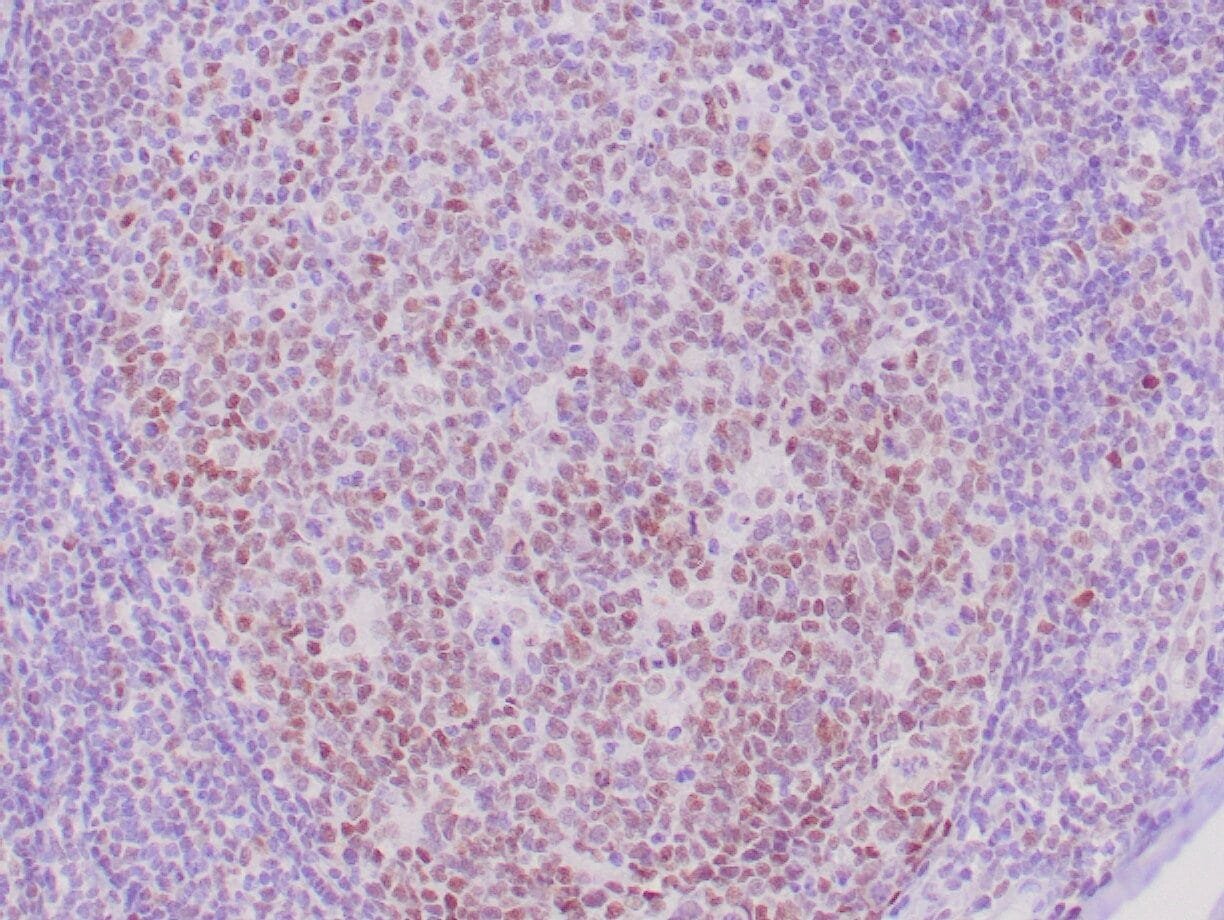 |
| Human tonsil stained with anti-retinoblastoma (Rb) antibody using peroxidase-conjugate and DAB chromogen. Note the nuclear staining of follicular center B cells. |
Publications
| pmid | title | authors | citation |
|---|---|---|---|
| We haven't added any publications to our database yet. | |||
Protocols
| relevant to this product |
|---|
| IHC |
Documents
| # | SDS | Certificate | |
|---|---|---|---|
| Please enter your product and batch number here to retrieve product datasheet, SDS, and QC information. | |||
Only logged in customers who have purchased this product may leave a review.
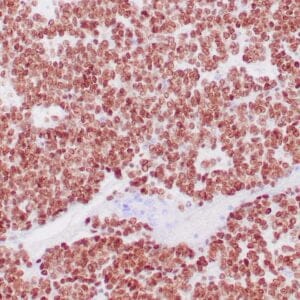
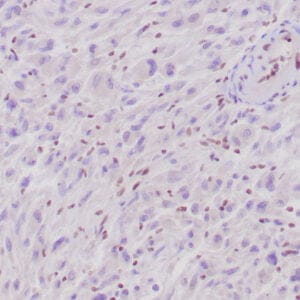
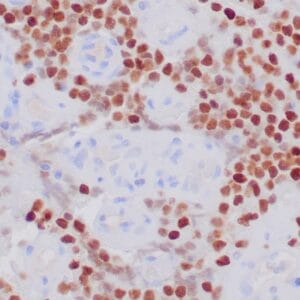
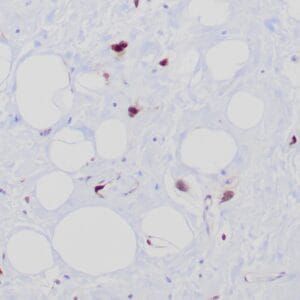

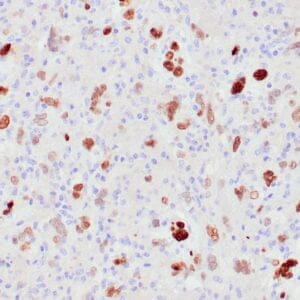
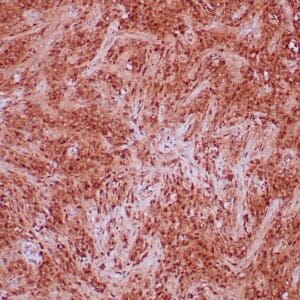
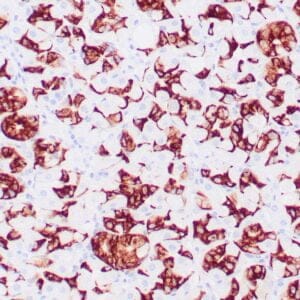
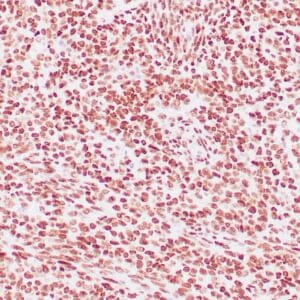
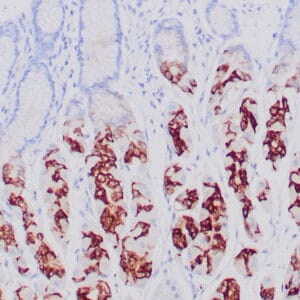
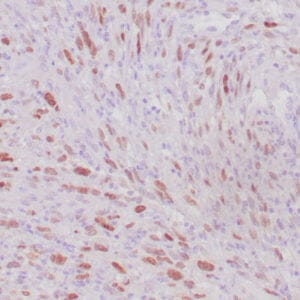
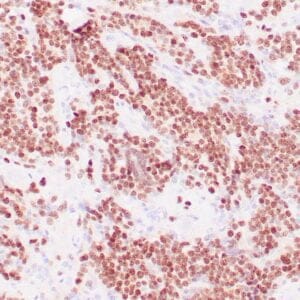
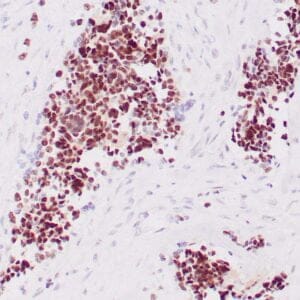

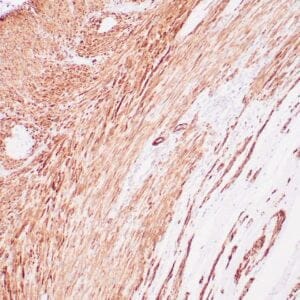
Reviews
There are no reviews yet.